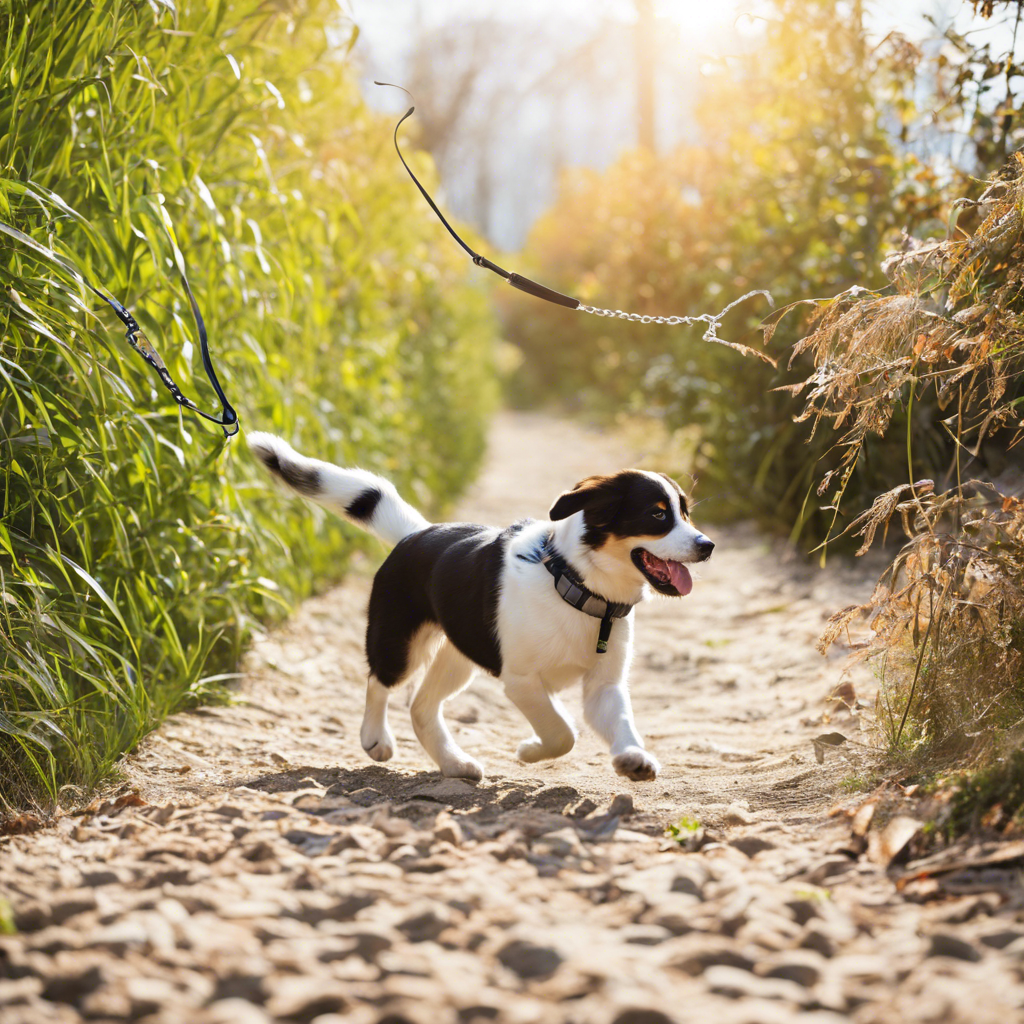# Dealing with Leash Reactivity: Effective Training Strategies to Transform Your Dog’s Behavior
Leash reactivity is a common challenge that many dog owners face during walks, characterized by excessive barking, lunging, or aggressive behavior when on a leash and encountering other dogs or stimuli. This behavior can be distressing for both the dog and the owner, often leading to tense and frustrating walks. However, with patience, consistency, and the right training techniques, leash reactivity can be effectively managed and improved.
**Understanding Leash Reactivity**
Leash reactivity often stems from underlying causes such as fear, anxiety, frustration, or over-excitement. Dogs may react to the presence of other dogs, people, or even specific objects, feeling threatened or overwhelmed. Their reactive behavior is an attempt to create distance or communicate their discomfort. It’s important to recognize that leash reactivity is not solely about aggression; it’s a complex response to environmental triggers.
**Building a Solid Foundation**
Before addressing leash reactivity, ensure your dog has a strong foundation of basic obedience skills. Commands like “sit,” “stay,” “leave it,” and “come” are essential for effective communication and control during training. Practice these commands in low-distraction environments first, gradually increasing the level of distraction as your dog becomes more proficient. Consistency and positive reinforcement go a long way in building a strong obedience base.
**Desensitization and Counter-Conditioning**
Two powerful techniques, desensitization and counter-conditioning, are the cornerstone of treating leash reactivity. Desensitization involves gradually exposing your dog to the trigger (e.g., other dogs) at a distance where they can remain calm. Over time, you decrease the distance, always ensuring your dog is below their reactivity threshold. Counter-conditioning aims to change your dog’s emotional response to the trigger by associating it with positive experiences, such as treats or praise.
Start by identifying the distance at which your dog can notice the trigger without reacting. Use high-value treats to reward calm behavior and gradually decrease the distance over multiple sessions. The goal is to teach your dog that seeing the trigger predicts something good, helping them develop a more positive association.
**Positive Reinforcement and Reward-Based Training**
Positive reinforcement is a cornerstone of effective dog training. Reward-based training involves using treats, praise, or play to reinforce desired behaviors. When your dog walks calmly on a loose leash or ignores potential triggers, reward them generously. This encourages your dog to repeat these behaviors, making the walk more enjoyable for both of you.
Create a “treasure hunt” by hiding treats along your walking route, encouraging your dog to sniff and explore. This can help shift their focus from potential triggers to the rewarding experience of finding treats.
**Managing the Environment**
While training, manage your dog’s environment to set them up for success. Choose quieter, less crowded routes for walks, avoiding areas with high dog traffic. Use a front-clip harness or a head halter to provide better control and prevent your dog from lunging.
**Consistency and Patience**
Leash reactivity training requires consistency and patience. Reactive behaviors often escalate quickly, so it’s crucial to remain calm and composed during training. Avoid using physical punishment or harsh corrections, as these can increase anxiety and worsen the problem. Instead, focus on positive reinforcement and gradual progression.
**Engage a Professional Dog Trainer**
If leash reactivity persists or is severe, consider hiring a professional dog trainer or behaviorist specializing in positive reinforcement methods. They can provide personalized guidance, assess your dog’s specific triggers, and tailor a training plan to your dog’s needs. Professional assistance can be invaluable, especially for more complex cases.
**Socialization and Controlled Interactions**
Gradual socialization and controlled interactions with other dogs can help improve leash reactivity. Arrange playdates with calm, friendly dogs in a controlled environment, allowing your dog to interact and build positive associations. Start at a distance and gradually decrease it, always monitoring body language for signs of discomfort.
**Exercise and Mental Stimulation**
Ensure your dog gets adequate exercise and mental stimulation before walks. A tired dog is often less reactive, as exercise helps burn off excess energy and promotes a calmer state. Engage in activities like fetch, hide-and-seek, or interactive puzzle toys to keep your dog mentally engaged.
**Maintain a Calm State During Walks**
During walks, maintain a calm and confident demeanor. Your dog takes cues from your behavior, so staying relaxed can help reduce their reactivity. Use a calm, soothing voice to give commands, and reward any signs of calm behavior. Avoid tension on the leash, and practice loose-leash walking techniques to promote a more relaxed walk.
In conclusion, dealing with leash reactivity requires a multi-faceted approach, combining training techniques, positive reinforcement, and environmental management. Patience, consistency, and a deep understanding of your dog’s triggers are essential. With the right tools and persistence, you can help your dog become more relaxed and confident on walks, transforming leash reactivity into a manageable challenge. Remember, every dog is unique, and progress may vary, but with dedication and positive reinforcement, you can achieve significant improvements in your dog’s leash behavior.

